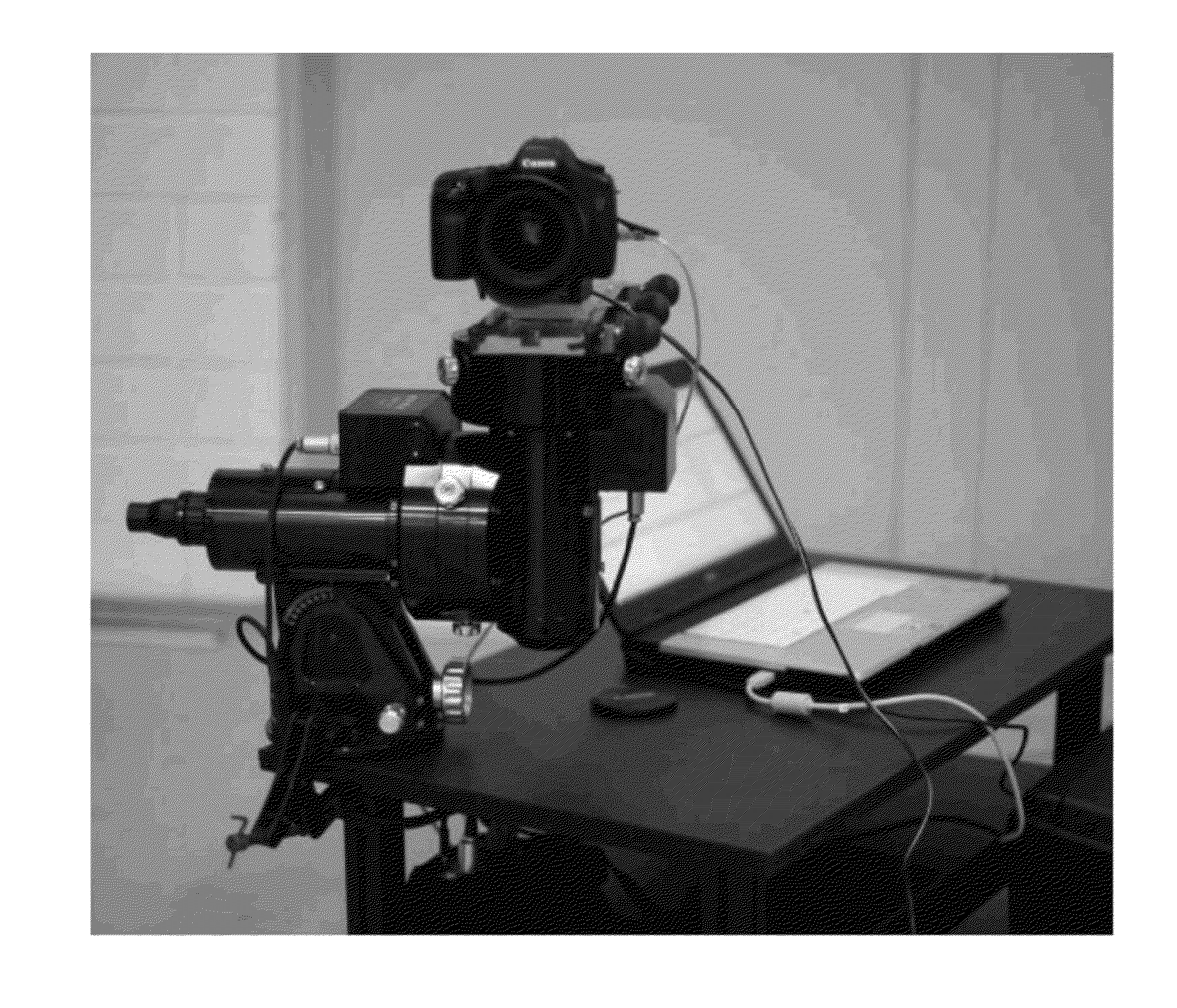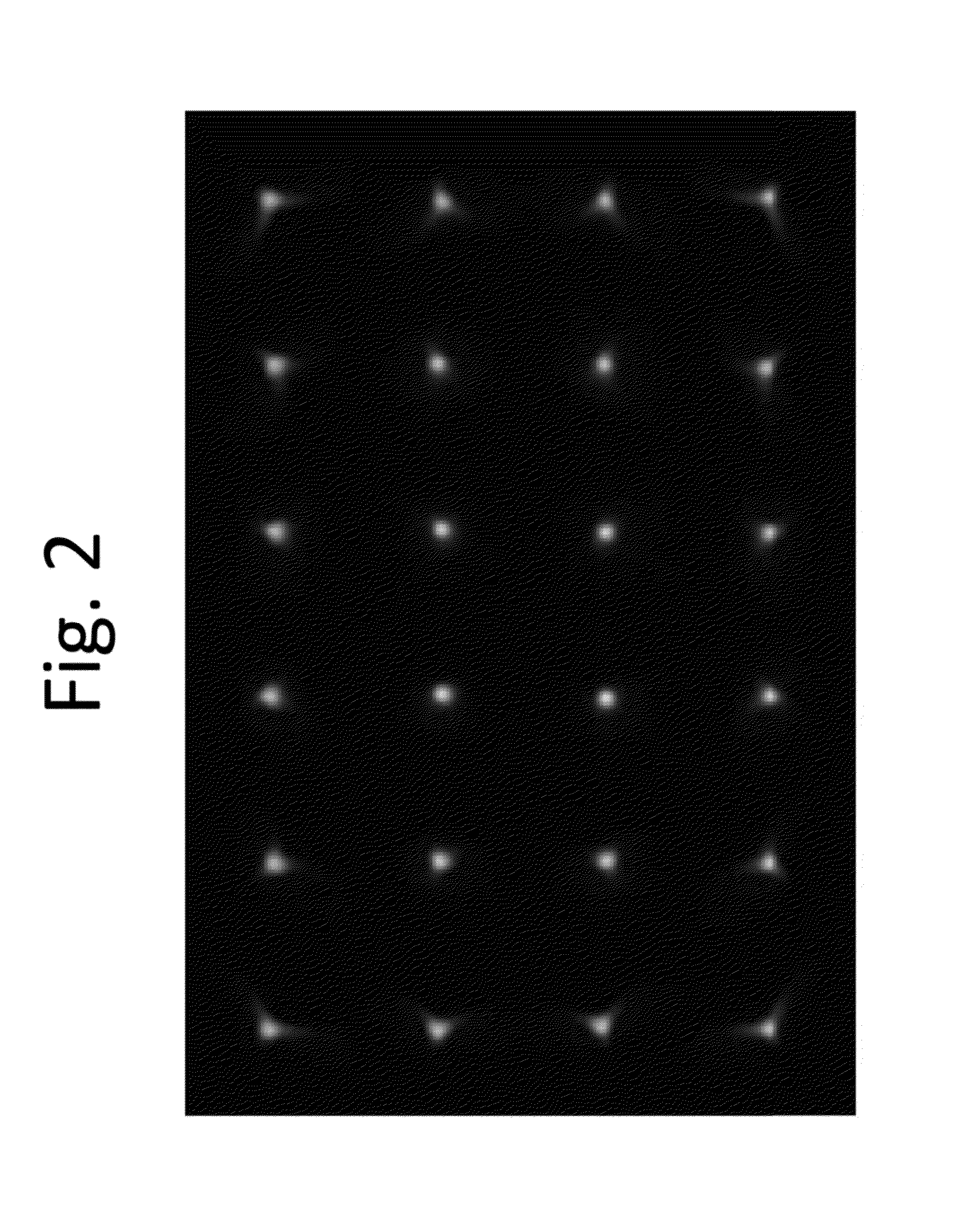Method and device for recovering a digital image from a sequence of observed digital images
a digital image and sequence technology, applied in the field of recovering a digital image, can solve the problems of blurry observed image, unwanted blurring of image, optical aberration, etc., and achieve the effect of simple implementation
- Summary
- Abstract
- Description
- Claims
- Application Information
AI Technical Summary
Benefits of technology
Problems solved by technology
Method used
Image
Examples
first embodiment
[0043]I. In the invention, it will be shown how to alleviate image degradations caused by imperfect optics. A calibration step may be used to encode the optical aberrations of an optical system in a space-variant point spread function (PSF). A corrected image may then be obtained by non-stationary deconvolution using that function. By including the Bayer array in the image formation model, demosaicing may be performed as part of the deconvolution.
[0044]In a first aspect, the invention is suitable for correcting monochromatic aberrations in a lens or optical system, including spherical aberration (in spherical lenses, the focal length is a function of the distance from the axis) as well as a number of off-axis aberrations: coma occurs in an oblique light bundle when the intersection of the rays is shifted w.r.t. its axis; field curvature occurs when the focal surface is non-planar; astigmatism denotes the case when the sagittal and tangential focal surfaces do not coincide (i.e., the...
second embodiment
[0059]II. According to the invention, the above-described ideas may also be applied to the correction of camera shakes. Camera shake is a common problem of handheld, longer exposed photographs occurring especially in low light situations, e.g., inside buildings. With a few exceptions such as panning photography, camera shake is unwanted, since it often destroys details and blurs the image. The effect of a particular camera shake can be described by a linear transformation on the sharp image, i.e., the image that would have been recorded using a tripod. Denoting for simplicity images as column vectors, the recorded blurry image y can be written as a linear transformation of the sharp image x, i.e., as y=Ax, where A is an unknown matrix describing the camera shake. The task of blind image deblurring is to recover x given only the blurred image y, but not A.
[0060]To obtain a generalized image deblurring method the linear transformation y=Ax may be represented by the above-described eff...
PUM
 Login to View More
Login to View More Abstract
Description
Claims
Application Information
 Login to View More
Login to View More - R&D
- Intellectual Property
- Life Sciences
- Materials
- Tech Scout
- Unparalleled Data Quality
- Higher Quality Content
- 60% Fewer Hallucinations
Browse by: Latest US Patents, China's latest patents, Technical Efficacy Thesaurus, Application Domain, Technology Topic, Popular Technical Reports.
© 2025 PatSnap. All rights reserved.Legal|Privacy policy|Modern Slavery Act Transparency Statement|Sitemap|About US| Contact US: help@patsnap.com



